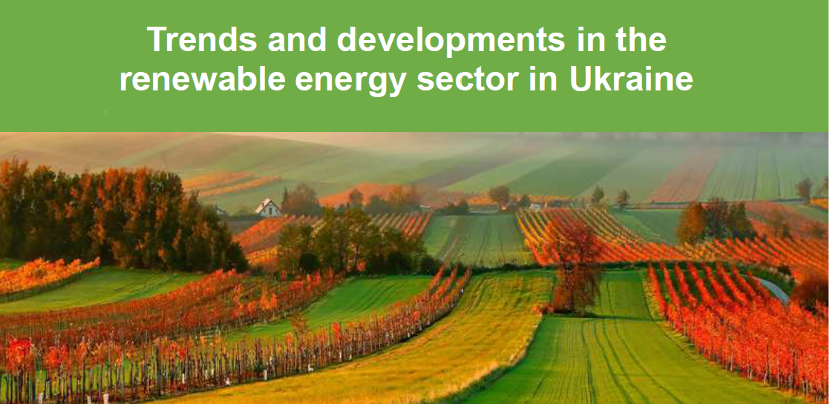Trends and developments in the bioenergy sector of Ukraine. Публікація "Тенденції розвитку біоенергетичного сектору України"
| A publication Trends and developments in the bioenergy sector of Ukraine has been developed by the Wageningen University and Research, Saxion University of Applied Sciences, Dutch Sustainable Development BV and Netherlands Enterprise Agency in cooperation with the Ukrainian experts. | |
| Публікацію підготували до друку експерти Вагенінгенського університету, Університету прикладних наук Саксьйон, компанії Dutch Sustainable Development BV і Нідерландського Агентства Підприємництва у співпраці з українськими експертами. Станом на 27. 09. 2018 українською перекладені лише розділ 3 і розділ 4. |
Download 'Trends and developments in the bioenergy sector of Ukraine, in English'
Download 'Розділ 3. Альтернативні технології переробки цукрових буряків'
Download 'Розділ 4 Вплив на ґрунти вилучення пожнивних решток та можливі заходи для зменшення такого впливу'

The government of Ukraine has adopted the Renewable Energy Directive (RED) with clear goals and a roadmap to facilitate its energy transition towards renewable sources. This is done because of both climate concerns as well as reasons related to Ukraine’s foreign policy which led the government to decide that Ukraine should work more on its own energy independence. Currently the percentage of renewable energy sources in Ukraine is among the lowest of the entire Europe and there is only slow development in terms of the growth of the sector, even though there is a lot of available biomass, given the large and flat surface of the country with a well-developed agricultural sector.
Content
Contents
Summary. 3
Introduction. 7
1.1 Background and relevance. 8
1.2 Research questions. 8
1.3 Outline of the report. 9
Development of renewable energy policy and markets in Ukraine. 10
2.1 Introduction. 11
2.1.1 Background. 11
2.1.2 Objectives. 11
2.2 Analysis of the Energy Sector in Ukraine. 12
2.2.1 The structure of energy sector 12
2.2.2 Renewable energy sector in Ukraine – overview.. 14
2.2.3 Renewable energy capacity in Ukraine – biomass to energy. 15
2.2.4 Renewable energy capacity – hydro. 15
2.2.5 Renewable energy capacity – wind. 16
2.2.6 Cost competitiveness. 18
2.3 Opportunities and barriers in the development of RED policies. 19
2.3.1 Development of solar energy. 19
2.3.2 Windenergy. 20
2.3.3 Biomass for energy. 20
2.3.4 Key factors related to implementation of RED in Ukraine in the energy sector 22
2.4 Analysis of barriers in implementing RED related to biofuels in Ukraine. 23
2.4.1 Research methodology. 23
2.4.2 Developments in the Ukrainian energy transition towards renewable energy sources. 23
2.4.3 Policy barriers in implementing the Renewable Energy Directive in Ukraine. 24
2.4.4 Technical barriers in implementation of the Renewable Energy Directive in Ukraine. 30
2.5 Conclusion and recommendations. 36
2.5.1 Conclusion. 36
2.5.2 Discussion. 37
2.5.3 Recommendations for foreign investors in the renewable and bio-energy markets. 37
Further reading. 46
Alternative processing technologies for sugar beets. 47
3.1 Introduction. 48
3.2 Alternative technologies for processing sugar beets. 48
3.2.1 Description of the Betaprocess. 49
3.2.2 Ethanol yield per hectare with Betaprocess. 50
3.2.3 Description of the business context of Ukraine. 51
3.3 Business Cases. 53
3.3.1 Introduction. 53
3.3.2 Assumptions behind the model 53
3.3.3 Costs & types of raw materials. 53
3.3.4 Production costs. 57
3.3.5 Labour & staff costs. 58
3.3.6 Other costs. 59
3.4 (By) product streams. 59
3.4.1 Types of product streams. 59
3.4.2 Rest streams of the DP+Beta process. 60
3.4.3 Costs of producing Animal fodder and biogas. 61
3.4.4 Revenue of animal fodder and biogas. 64
3.5 Alternative options for beet / molasse processing in existing factories. 65
3.6 Development of the bio-ethanol price. 67
3.7 Conclusion. 69
References. 69
Soil effects due to crop residue removal and possible measures to reduce impacts. 71
4.1 Introduction. 72
4.1.1 Background. 72
4.1.2 Objectives. 73
4.1.3 Outline of this chapter. 73
4.2 Methodology. 73
4.2.1 Overall approach. 73
4.2.2 RothC soil carbon model 74
4.2.3 Input data. 74
4.2.4 Parameterisation of options. 77
4.3 Results. 78
4.3.1 Results for baseline scenarios. 78
4.3.2 Effect of improvement options. 79
4.4 Discussion and conclusion. 79
References. 80
Annexes. 81
Annex 1: Business Model for bioethanol from sugar beets. 82
Annex 2: Ethanol yield per hectare calculation for Ukraine. 83